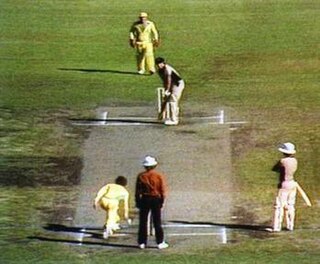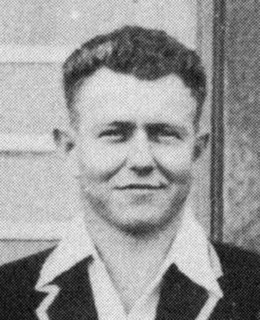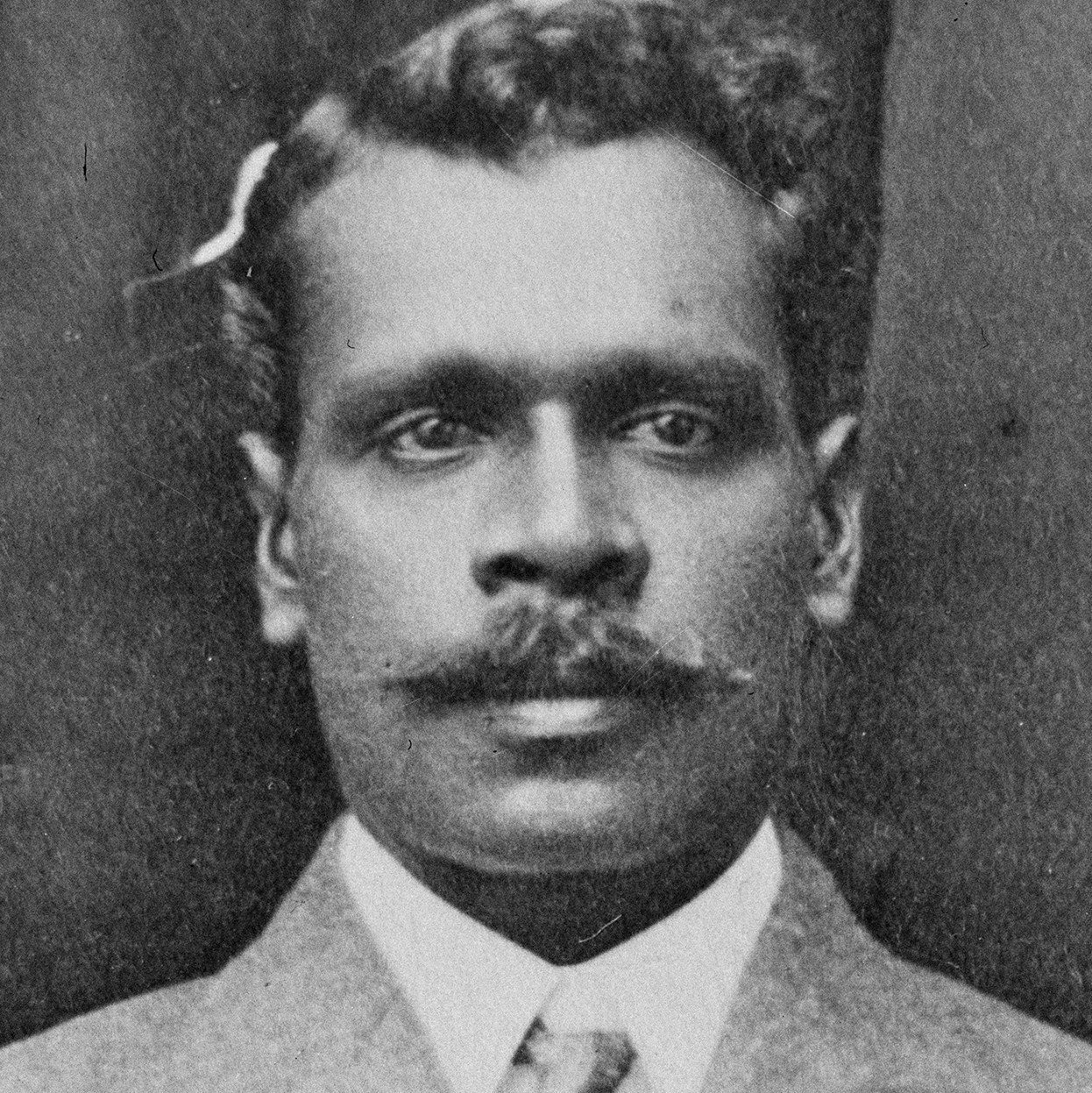
Deshabandu Muttiah Muralitharan is a Sri Lankan cricket coach, former professional cricketer, businessman and a member of the ICC Cricket Hall of Fame. Averaging over six wickets per Test match, Muralitharan is widely regarded as the most successful and one of the greatest bowlers to ever play international cricket. He is the only bowler to take 800 Test wickets and more than 530 One Day International (ODI) wickets. As of 2022, he has taken more wickets in international cricket than any other bowler.

Bowling, in cricket, is the action of propelling the ball toward the wicket defended by a batter. A player skilled at bowling is called a bowler; a bowler who is also a competent batter is known as an all-rounder. Bowling the ball is distinguished from throwing the ball by a strictly specified biomechanical definition, which restricts the angle of extension of the elbow. A single act of bowling the ball towards the batsman is called a ball or a delivery. Bowlers bowl deliveries in sets of six, called an over. Once a bowler has bowled an over, a teammate will bowl an over from the other end of the pitch. The Laws of Cricket govern how a ball must be bowled. If a ball is bowled illegally, an umpire will rule it a no-ball. If a ball is bowled too wide of the striker for the batsman to be able to play at it with a proper cricket shot, the bowler's end umpire will rule it a wide.
A doosra is a particular type of delivery by an off-spin bowler in the sport of cricket. The doosra spins in the opposite direction to an off break, and aims to confuse the batsman into playing an unavoidable shot.

In cricket, an extra is a run scored by, or awarded to, a batting team which is not credited to any individual batsman. They are the runs scored by methods other than striking the ball with the bat.
Bishan Singh Bedi is a former Indian cricketer who was primarily a slow left-arm orthodox bowler. He played Test cricket for India from 1966 to 1979 and formed part of the famous Indian spin quartet. He played a total of 67 Tests and took 266 wickets. He also captained the national side in 22 Test matches. Bedi wore a colourful patka and has voiced outspoken and forthright views on cricketing matters. He was awarded the Padma Shri award in 1970.

Arthur Webb Mold was an English professional cricketer who played first-class cricket for Lancashire as a fast bowler between 1889 and 1901. A Wisden Cricketer of the Year in 1892, he was selected for England in three Test matches in 1893. Mold was one of the most effective bowlers in England during the 1890s but his career was overshadowed by controversy over his bowling action. Although he took 1,673 wickets in first-class matches, many commentators viewed his achievements as tainted.

Ian Meckiff is a former cricketer who represented Australia in 18 Test matches between 1957 and 1963. A left-arm fast bowler, he is best known for two matters that were unrelated to his skill as a player: he was the batsman run out by Joe Solomon in 1960, causing the first Tied Test in cricket history; and in December 1963, his career was sensationally ended when he was called for throwing in the First Test against South Africa by Australian umpire Col Egar. During the late 1950s and early 1960s, there had been a media frenzy about the perceived prevalence of illegal bowling actions in world cricket. The controversy and speculation that dogged Meckiff in the years preceding his final match caused sections of the cricket community to believe that he had been made a scapegoat by the Australian cricket authorities to prove their intent to stamp out throwing.
Colin John "Col" Egar was an Australian Test cricket umpire.
Geoffrey Merton Griffin was a Test cricketer who toured England with the South African cricket team in 1960, appearing in two Test matches. A right-arm, fast bowler and lower order batsman, his selection for the tour was controversial, because of his suspect bowling action – some of his deliveries were judged to be thrown rather than bowled. The core of his problem was that, due to a childhood accident, he was unable to fully straighten his right arm.
Ross Alexander Emerson is a former Australian cricket umpire who is best known for calling Sri Lankan off-spinner Muttiah Muralitharan for throwing. He also played grade cricket for Petersham-Marrickville in the Sydney grade cricket competition. He is the brother-in-law of former Australian swing bowler Terry Alderman.
Darrell Bruce Hair is an Australian former Test match cricket umpire, from New South Wales. He stood on the International panel of umpires from 2002 to 2003, before he, along with fellow Australian Simon Taufel, and New Zealander Billy Bowden, was appointed to the ICC Elite umpire panel. After an ICC board meeting discussed his actions in a Test match between Pakistan and England in 2006 it was decided he should not umpire matches involving the Test playing nations. He was restored to the Elite Panel by the ICC on 12 March 2008 and stood in the England v New Zealand Tests at Old Trafford in May and Trent Bridge in June 2008.
In the sport of cricket, throwing, commonly referred to as chucking, is an illegal bowling action which occurs when a bowler straightens the bowling arm when delivering the ball. Throws are not allowed. The Laws of Cricket specify that only the rotation of the shoulder can be used to impart velocity to the ball – a bowler's arm must not extend during the bowling action. If the umpire deems that the ball has been thrown, they will call a no-ball which means the batsman cannot be given out from that delivery.

The underarm bowling incident of 1981 is a sporting controversy which took place on 1 February 1981, when Australia played New Zealand in a One Day International cricket match, the third in the best-of-five final of the 1980-81 World Series Cup, at the Melbourne Cricket Ground.

Barry Fisher was an Australian first class cricketer who represented Queensland from 1954–55 until 1967–68. A right arm fast bowler, he played 56 matches and briefly was seen as a future Australian Test prospect after being selected for an Australian Second XI tour of New Zealand in 1959–60. His first-class career ended after he was no-balled for throwing in November 1967.
Ronald Andrewes Halcombe was a first-class cricketer who represented South Australia and Western Australia in a career spanning from 1926/27 to 1939/40.

Jack Marsh was an Australian first-class cricketer of Australian Aboriginal descent who represented New South Wales in six matches from 1900–01 to 1902–03. A right-arm fast bowler of extreme pace, Marsh was blessed with high athletic qualities and was regarded as one of the outstanding talents of his era. His career was curtailed by continual controversy surrounding the legality of his bowling action; he was no-balled multiple times for throwing. As a result of the debate over the legitimacy of his action, Marsh never established himself at first-class level and was overlooked for national selection. In contemporary discourse, Marsh's lack of opportunities has often been attributed to racial discrimination.
Harold Norman Jack Cotton was an Australian cricketer who represented South Australia in first-class cricket from the late 1930s to the early 1940s, taking 76 wickets in 25 matches as a fast bowler. He is primarily known for twice being no-balled by Andrew Barlow for throwing.

Franklyn "Frank" Joseph Pitcher was an Australian first-class cricket player who represented Victoria in one match in 1910–11 against the touring South Africans. Pitcher was a right-arm medium pace bowler. During the match Pitcher became the first player to be no-balled by both umpires in a match at first-class level of cricket in Australia. Pitcher was also the only player to be no-balled for throwing in his debut match at first-class level.
The England team were very unhappy with the umpiring of the 1958–59 Ashes series, in particular the questionable actions of some bowlers in the Australian team. The televising of Test cricket was in its infancy and the notion of Test umpires using slow-motion replays or other modern techniques was considered absurd. Instead the umpires had to make judgements based on what they saw in a split-second, and honest mistakes were accepted as part and parcel of the game. However, touring teams sometimes felt that there was a natural bias towards the home team which led to some acrimony. Keith Miller thought "Mel McInnes, Colin Hoy and Ron Wright were our leading umpires in the 1954-55 M.C.C. tour of Australia, and I have no hesitation in saying that McInnes gave the finest exhibition of umpiring in a Test series that I have experienced". The England team thought well of him too, but in 1958-59 he lost the confidence of the England players and himself, appeared hesitant and gave some surprising decisions. In the Fourth Test he hesitated to give Ken Mackay out even after the batsman walked after snicking a catch off Brian Statham. Later Colin McDonald should have been run out when Fred Trueman flattened the stumps after his runner Jim Burke ran round the back of McInnes. McInnes gave him out, but then changed his mind and gave him not out as he had not seen whether Burke had made the run or not. On his next ball McDonald sportingly pulled his bat out of the way of the stumps to give Trueman "the easiest Test wicket I have ever taken". Trueman was affected again when he batted, given out caught by Wally Grout off Richie Benaud when he had dropped his bat and missed the ball. The England team became dispirited by the umpiring mistakes and, believing the officials to be against them, lost heart. As Fred Trueman wrote
...the Australian umpires demonstrated as much impartiality as a religious zealot. We just couldn't get favourable decisions and they no-balled England bowlers left, right and centre...one of the umpires consistently no-balled me...It was annoying, especially as this umpire seemed to allow Gordon Rorke to bowl with both his feet over the front line!...I suffered, as did others, from appalling umpiring decisions when batting...It was unbelievable."









